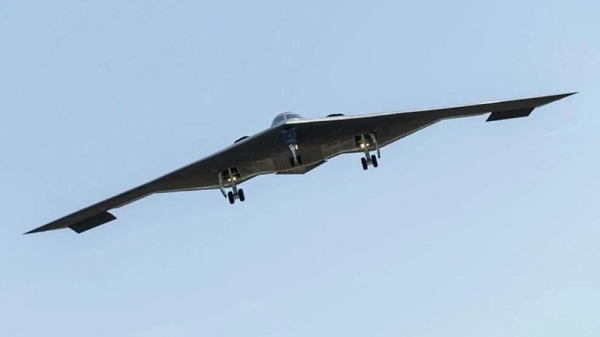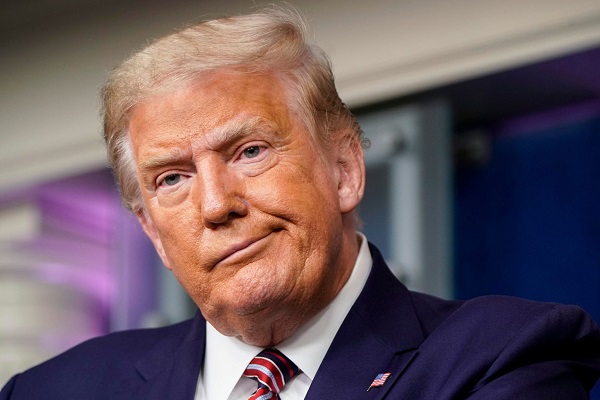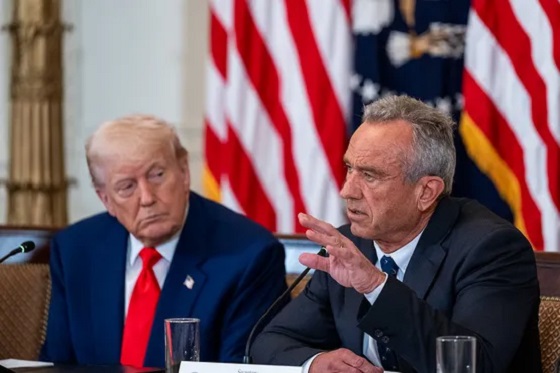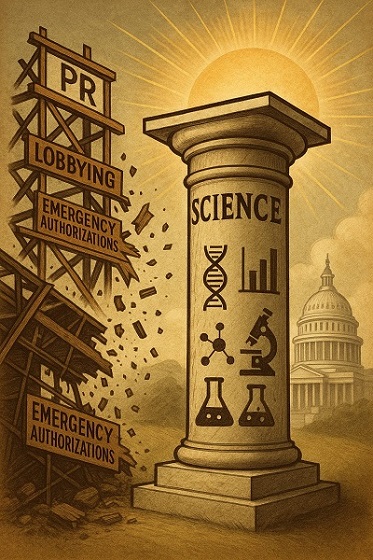International
President Xi Skips Key Summit, Adding Fuel to Ebbing Power Theories

First-ever BRICS absence deepens questions over internal CCP dissent
Chinese President Xi Jinping will skip the upcoming BRICS summit in Rio de Janeiro, the first time he has ever missed the gathering of major emerging powers—a development that will add to speculation that Xi’s power among elite Chinese Communist circles is being challenged by a faction publicly humiliated by Xi in 2022.
Beijing cited a “scheduling conflict,” according to multiple officials involved in summit planning, South China Morning Post has reported. But Xi’s absence—coming amid intensifying economic pressures and purges within the People’s Liberation Army—has triggered speculation that deeper internal political currents may be at play.
China’s delegation to Brazil will instead be led by Premier Li Qiang, marking the second time in under a year that Xi has delegated such a high-level multilateral forum. Observers note that Li also stood in for Xi at the G20 summit in India in 2023.
The BRICS platform is a key pillar of China’s push for a multipolar world, challenging the Western-led order.
The official explanation for Xi’s absence—that he has already met Brazilian President Luiz Inácio Lula da Silva twice in the past year—has done little to quell questions about the Chinese leader’s standing at home. Those concerns are being amplified by mounting signs of internal dissent within the Chinese Communist Party, as China’s economy falters and long-suppressed questions about Xi’s hardline tactics against the West, including mounting threats to invade Taiwan, gain traction with the reemergence of a sidelined political faction.
As detailed in a recent Jamestown Foundation analysis, Xi Jinping may be facing renewed political friction from within the Party’s elite ranks—specifically, the so-called Tuanpai, or Youth League faction, aligned with former president Hu Jintao and premier Wen Jiabao.
The history of the Xi-Hu rift is punctuated by a theatrical public humiliation: in October 2022, Hu Jintao was forcibly escorted from the closing session of the CCP’s 20th Party Congress. The moment was captured on live television and interpreted globally as Xi’s final symbolic purge of Hu’s faction. Hu, seated next to Xi Jinping, appeared to reach for documents on the table. Li Zhanshu, seated to Hu’s left, took the papers and placed them out of reach. Xi signaled, and two security staff approached Hu, gently lifting him from his seat and escorting him out. Hu appeared reluctant, attempting to retrieve the documents and briefly exchanging words with Xi. He also patted Premier Li Keqiang, a key figure in the Youth League faction, on the shoulder before leaving. The stunning incident lasted about 90 seconds.
Li died less than a year later, in October 2023, reportedly from a sudden heart attack while swimming in Shanghai. His unexpected death at age 68—soon after leaving office—was officially described as natural, but has fueled speculation among Chinese observers and dissidents, with some questioning the timing and circumstances.
Evidence of the Hu faction’s comeback emerged from the secretive Party retreat in Beidaihe in August 2023. According to Nikkei Asia, and later corroborated by additional sources, three senior Communist Party elders delivered pointed criticisms of Xi Jinping’s policies behind closed doors. All three had ties to the former Hu-Wen administration. Their intervention reportedly provoked visible frustration from Xi, according to individuals familiar with the meeting.
In a possible gesture of appeasement—or vulnerability—Xi has more recently echoed terminology traditionally associated with Hu’s tenure. He invoked the phrase “scientific, democratic, and law-based policymaking,” a hallmark of Hu’s governing lexicon, signaling either rhetorical triangulation or a forced concession to resurgent internal pressures.
The most striking signal of renewed factional maneuvering is the quiet reemergence of Hu Chunhua, according to Jamestown’s analysis, the protégé of Hu Jintao and Wen Jiabao once viewed as a potential future president. Xi sidelined Hu Chunhua in 2022 by excluding him from the Politburo—an unprecedented break from succession norms. But in recent months, Hu has been deployed in high-level diplomatic missions typically reserved for top officials.
In April 2024, Hu led a Chinese People’s Political Consultative Conference delegation to West Africa. The next month, he appeared at the Vietnamese Embassy to pay respects following the death of Vietnam’s former president—a role traditionally carried out by a Politburo-level official.
Xi’s sweeping anti-corruption purges in 2023—many of which targeted military figures linked to the Central Military Commission—have depleted some of his institutional backing. The Jamestown Foundation notes that these purges, rather than consolidating Xi’s grip, may have created new political openings for rivals.
Taken together with broader indicators of factional turbulence, Xi’s BRICS no-show feeds a growing intelligence narrative—shared by The Bureau’s expert sources in the United States and Taiwan—that China’s paramount leader, having consolidated power through sweeping purges, is now encountering mounting signs of blowback from within the Party.
The Bureau is a reader-supported publication.
To receive new posts and support my work, consider becoming a free or paid subscriber.
Invite your friends and earn rewards
conflict
Despite shaky start, ceasefire shows signs of holding

Chief of the General Staff LTG Eyal Zamir during a situational assessment following the beginning of the ceasefire with Iran
Quick Hit:
A fragile ceasefire between Israel and Iran appeared to hold Tuesday after early strikes from both sides threatened to unravel it. President Trump, who brokered the deal, criticized the violations and pushed both nations to stand down.
Key Details:
- Trump declared a “complete and total ceasefire” late Monday after Iran fired missiles at a U.S. base in Qatar in response to American strikes on its nuclear sites.
- Hours after the ceasefire was set to begin, Israel accused Iran of violating it by firing missiles into its territory—claims Tehran denied, even as explosions and air raid sirens rocked northern Israel.
- Trump publicly criticized both nations, stating “they don’t know what the f*** they’re doing,” and later confirmed that Israeli warplanes would turn back instead of launching a broader retaliation.
Diving Deeper:
Calm returned to parts of the Middle East Tuesday as a U.S.-brokered ceasefire between Israel and Iran began to settle in—though not without incident. For nearly two weeks, the region was on the brink of a broader war, ignited by Israeli strikes on Iranian nuclear and military targets and exacerbated by retaliatory attacks from Tehran.
President Donald Trump took credit for halting the hostilities. “ISRAEL is not going to attack Iran,” he wrote on Truth Social. “All planes will turn around and head home, while doing a friendly ‘Plane Wave’ to Iran. Nobody will be hurt, the Ceasefire is in effect!”
Despite the ceasefire’s official start early Tuesday morning, it nearly unraveled within hours. Israeli officials said Iran launched at least two missiles after the truce deadline, though they were intercepted before impact. Iran, meanwhile, denied any post-deadline strikes and blamed Israel for earlier attacks.
Speaking before leaving for a NATO summit, Trump said both sides had violated the agreement and did not hold back his frustration. “We basically have two countries that have been fighting so long and so hard that they don’t know what the f*** they’re doing,” he said, adding that he was “not happy with Israel.”
Still, the agreement held. Israeli Prime Minister Benjamin Netanyahu’s office said the country stood down from further attacks following a direct conversation with Trump. Israel claimed to have achieved its objectives, including weakening Iran’s nuclear and missile capabilities.
The conflict’s origin traces back to Israeli fears that Iran was nearing the threshold of building nuclear weapons, despite Tehran’s insistence that its program is for peaceful energy purposes. Over the weekend, the U.S. deepened its involvement by launching bunker-buster bombs on Iranian nuclear sites. Iran responded with a limited strike on a U.S. base in Qatar—an attack Washington said came with advance warning and caused no casualties.
Meanwhile, fallout from the war continues to spread. Israeli officials said at least 28 of their citizens have been killed and over 1,000 injured. Iranian casualty estimates are far higher, with nearly 1,000 reported dead, including hundreds of civilians and military personnel, according to the Human Rights Activists group.
Even as the ceasefire sets in, the risk of broader conflict remains. Pro-Iran militias in Iraq reportedly launched drone attacks on U.S. bases overnight, though they were intercepted without casualties. The U.S. has begun evacuating American citizens from Israel, and China—one of Iran’s few remaining oil buyers—has condemned the U.S. strikes, warning of a dangerous cycle of escalation.
Trump said he is not seeking regime change in Iran, walking back prior comments. “Regime change takes chaos and, ideally, we don’t want to see much chaos,” he told reporters aboard Air Force One.
Still, the situation remains volatile. The ceasefire, while welcomed, remains fragile—held together largely by Trump’s pressure campaign and the willingness of both sides to pause, if only momentarily, from what could have spiraled into an uncontrollable regional war.
Bjorn Lomborg
The Physics Behind The Spanish Blackout

From the Frontier Centre for Public Policy
Madrid knew solar and wind power were unreliable but pressed ahead anyway
When a grid failure plunged 55 million people in Spain and Portugal into darkness at the end of April, it should have been a wake-up call on green energy. Climate activists promised that solar and wind power were the future of cheap, dependable electricity. The massive half-day blackout shows otherwise. The nature of solar and wind generation makes grids that rely on them more prone to collapse—an issue that’s particularly expensive to ameliorate.
As I wrote in these pages in January, the data have long shown that environmentalists’ vision of cheap, reliable solar and wind energy was a mirage. The International Energy Agency’s latest cost data continue to underscore this: Consumers and businesses in countries with almost no solar and wind on average paid 11 U.S. cents for a kilowatt hour of electricity in 2023, but costs rise by more than 4 cents for every 10% increase in the portion of a nation’s power generation that’s covered by solar and wind. Green countries such as Germany pay 34 cents, more than 2.5 times the average U.S. rate and nearly four times China’s.
Prices are high in no small part because solar and wind require a duplicate backup energy system, often fossil-fuel driven, for when the sun doesn’t shine or the wind doesn’t blow. The Iberian blackout shows that the reliability issues and costs of solar and wind are worse than even this sort of data indicates.
Grids need to stay on a very stable frequency—generally 50 Hertz in Europe—or else you get blackouts. Fossil-fuel, hydro and nuclear generation all solve this problem naturally because they generate energy by powering massive spinning turbines. The inertia of these heavy rotating masses resists changes in speed and hence frequency, so that when sudden demand swings would otherwise drop or hike grid frequency, the turbines work as immense buffers. But wind and solar don’t power such heavy turbines to generate energy. It’s possible to make up for this with cutting-edge technology such as advanced inverters or synthetic inertia. But many solar and wind farms haven’t undergone these expensive upgrades. If a grid dominated by those two power sources gets off frequency, a blackout is more likely than in a system that relies on other energy sources.
Spain has been forcing its grid to rely more on unstable renewables. The country has pursued an aggressive green policy, including a commitment it adopted in 2021 to achieve “net zero” emissions by 2050. The share of solar and wind as a source of Spain’s electricity production went from less than 23% in 2015 to more than 43% last year. The government wants its total share of renewables to hit 81% in the next five years—even as it’s phasing out nuclear generation.
Just a week prior to the blackout, Spain bragged that for the first time, renewables delivered 100% of its electricity, though only for a period of minutes around 11:15 a.m. When it collapsed, the Iberian grid was powered by 74% renewable energy, with 55% coming from solar. It went down under the bright noon sun. When the Iberian grid frequency started faltering on April 28, the grid’s high proportion of solar and wind generation couldn’t stabilize it. This isn’t speculation; it’s physics. As the electricity supply across Spain collapsed, Portugal was pulled along, because the two countries are tightly interconnected through the Iberian electricity network.
Madrid had been warned. The parent company of Spain’s grid operator admitted in February: “The high penetration of renewable generation without the necessary technical capabilities in place to keep them operating properly in the event of a disturbance . . . can cause power generation outages, which could be severe.”
Yet the Spanish government is still in denial. Even while admitting that he didn’t know the April blackout’s cause, Prime Minister Pedro Sánchez insisted that there was “no empirical evidence” that renewables were to blame and that Spain is “not going to deviate a single millimeter” from its green energy ambitions.
Unless the country—and its neighbors—are comfortable with an increased risk of blackouts, this will require expensive upgrades. A new Reuters report written with an eye to the Iberian blackout finds that for Europe as a whole this would cost trillions of dollars in infrastructure updates. It’s possible that European politicians can talk voters into eating that cost. It’ll be impossible for India or nations in Africa to follow suit.
That may be unwelcome news to Mr. Sánchez, but even a prime minister can’t overcome physics. Spain’s commitment to solar and wind is forcing the country onto an unreliable, costly, more black-out-prone system. A common-sense approach would hold off on a sprint for carbon reductions and instead put money toward research into actually reliable, affordable green energy.
Unfortunately for Spain and those countries unlucky enough to be nearby, the Spanish energy system—as one Spanish politician put it—“is being managed with an enormous ideological bias.”
Bjorn Lomborg is president of the Copenhagen Consensus, a visiting fellow at Stanford University’s Hoover Institution and author of “Best Things First.”
-

 Bruce Dowbiggin2 days ago
Bruce Dowbiggin2 days agoWhat Connor Should Say To Oilers: It’s Not You. It’s Me.
-

 Business2 days ago
Business2 days agoThe Passage of Bill C-5 Leaves the Conventional Energy Sector With as Many Questions as Answers
-

 Business2 days ago
Business2 days agoThe U.S. Strike in Iran-Insecurity About Global Oil Supply Suddenly Makes Canadian Oil Attractive
-

 Bjorn Lomborg21 hours ago
Bjorn Lomborg21 hours agoThe Physics Behind The Spanish Blackout
-

 conflict20 hours ago
conflict20 hours agoDespite shaky start, ceasefire shows signs of holding
-

 conflict1 day ago
conflict1 day agoWar over after 12 days? Ceasefire reached between Israel, Iran
-

 Crime1 day ago
Crime1 day agoFlorida rescues 60 missing kids in nation’s largest-ever operation
-

 Business2 days ago
Business2 days agoFederal fiscal anchor gives appearance of prudence, fails to back it up








